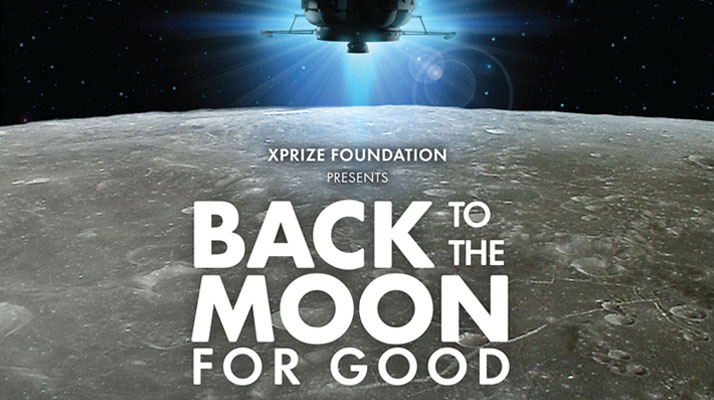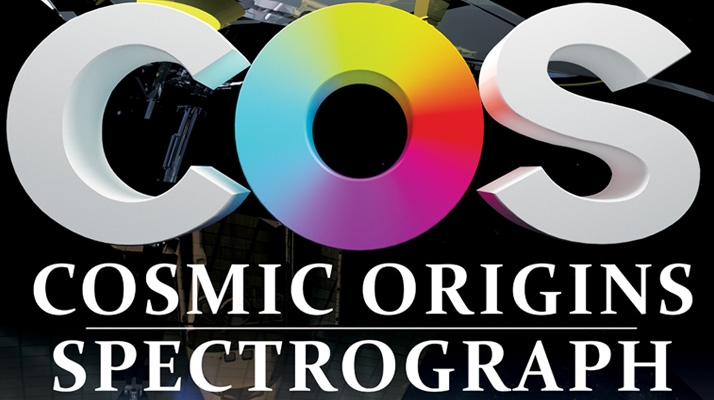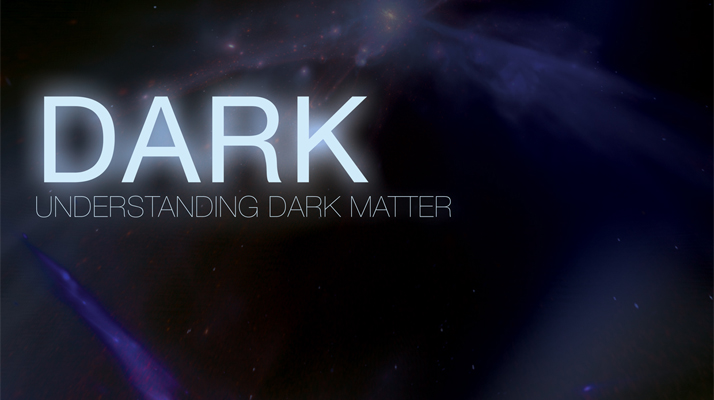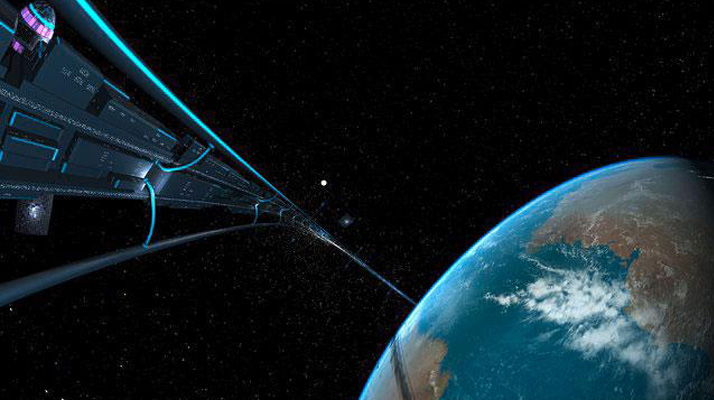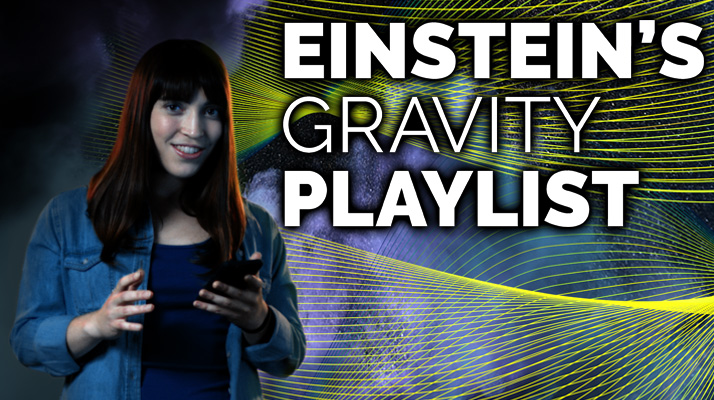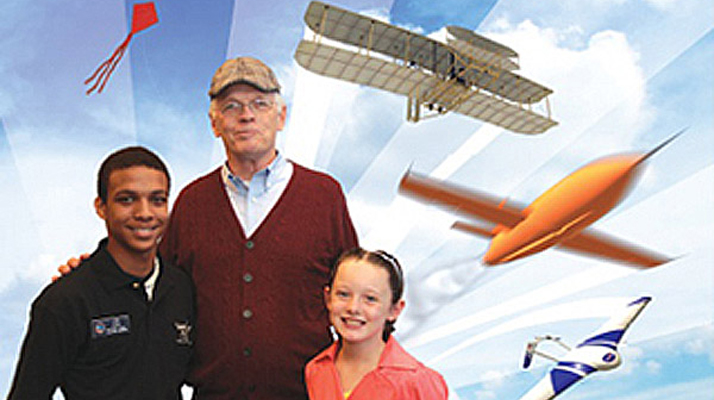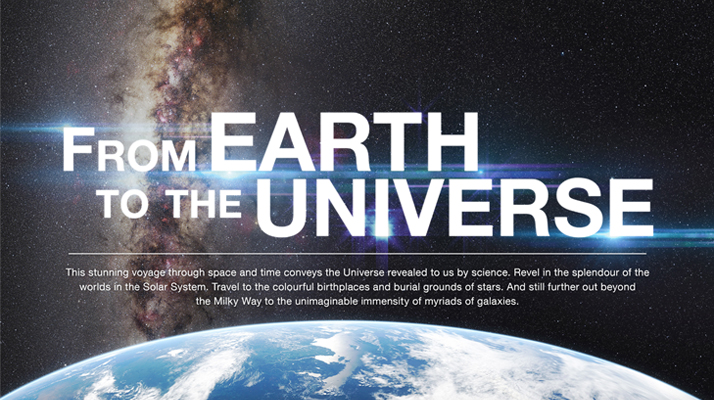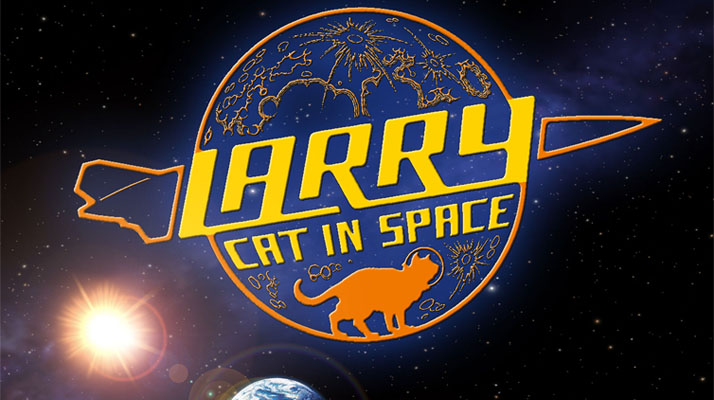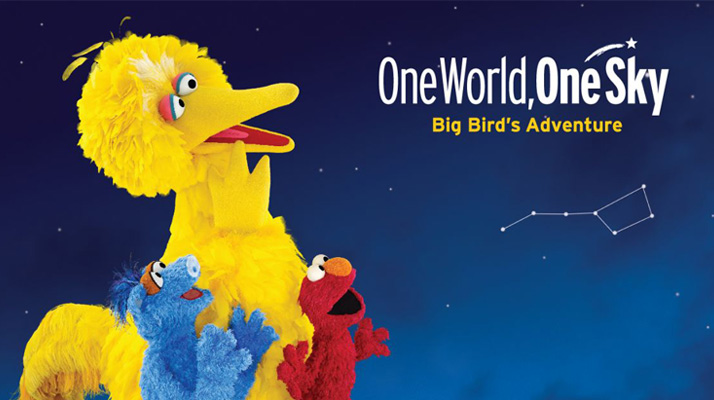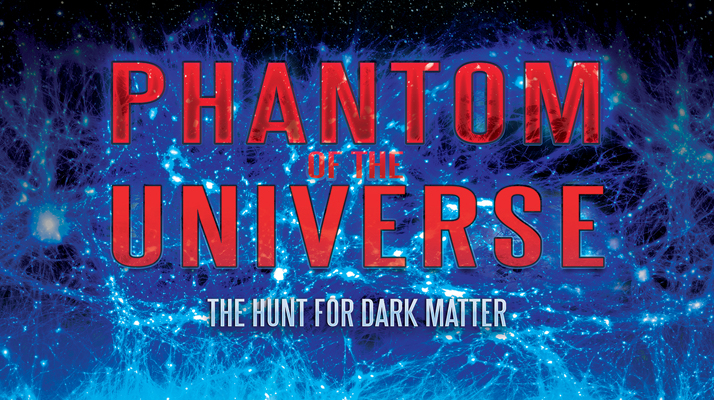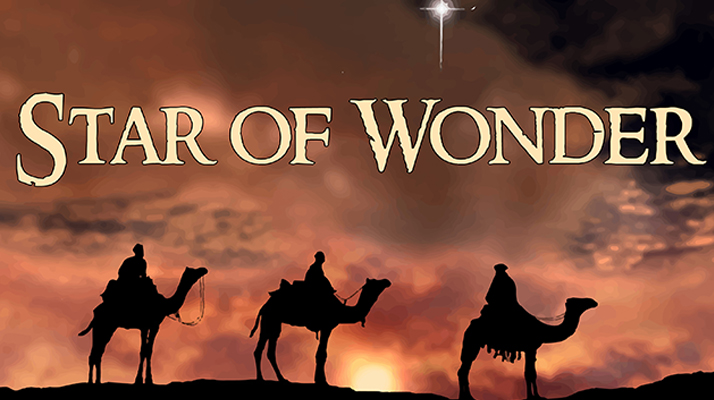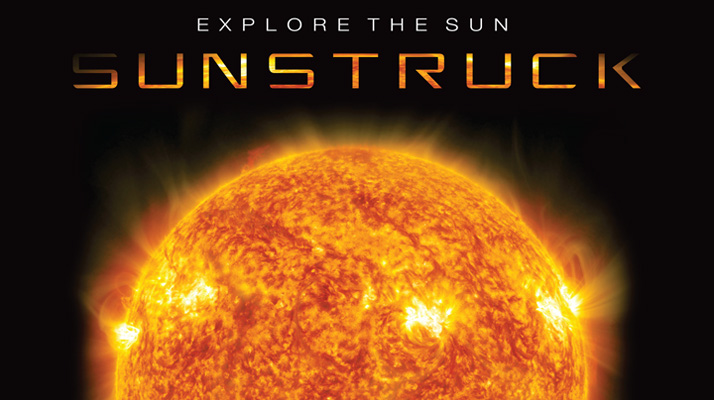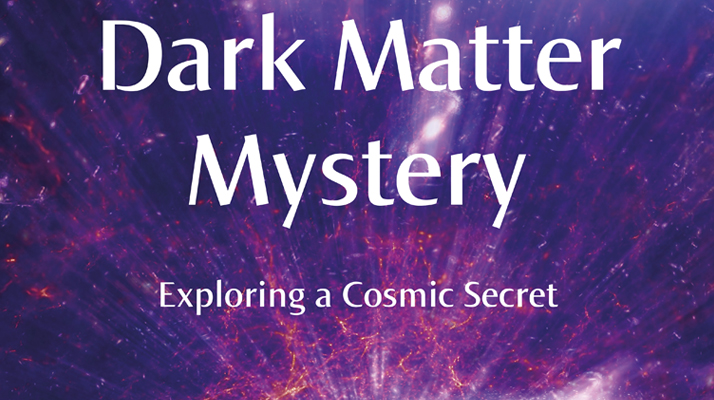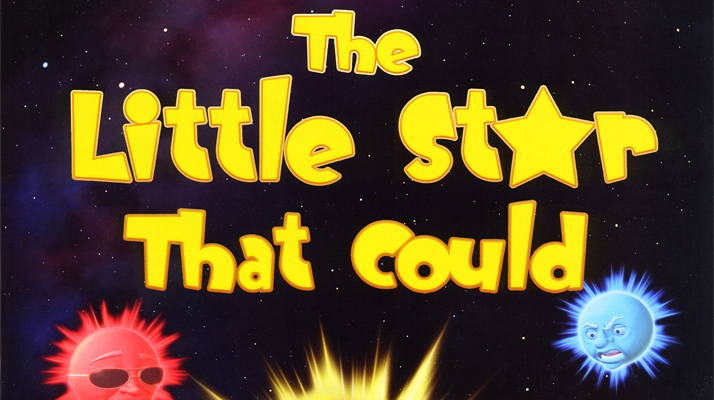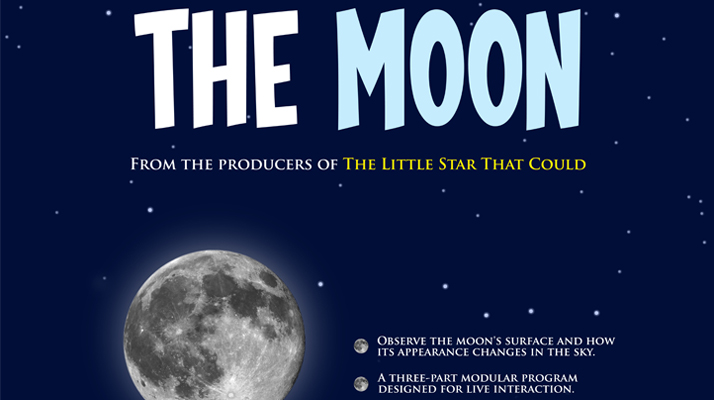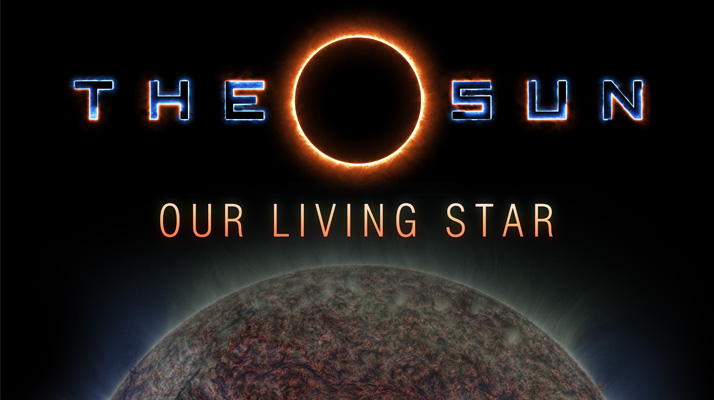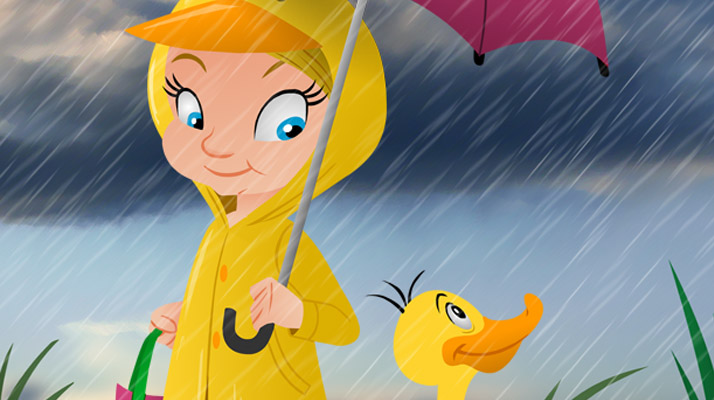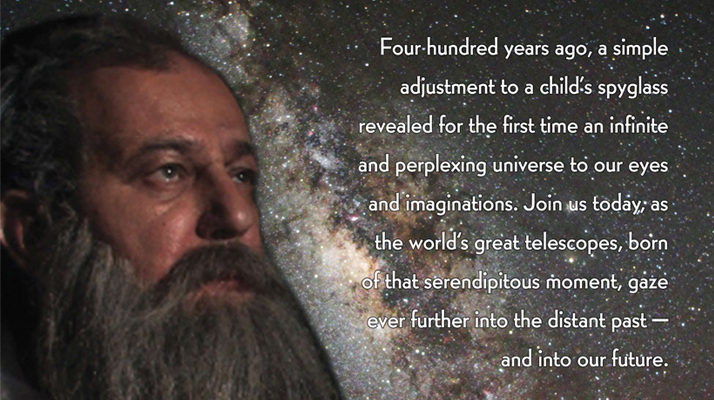Planetarium Show Catalog
The MSUM planetarium has an amazing array of programs for youth and adults of all ages, from asteroids and dinosaurs to a plethora of universe and galaxy offerings to seasonal shows. All of our full dome educational movies are designed specifically for planetariums, providing a sensory-filled, immersive experience leaving you wanting more!
If you need assistance selecting a program that best meets your group’s learning needs and interests, please contact us. We’ll do our best to accommodate your date and time requests.
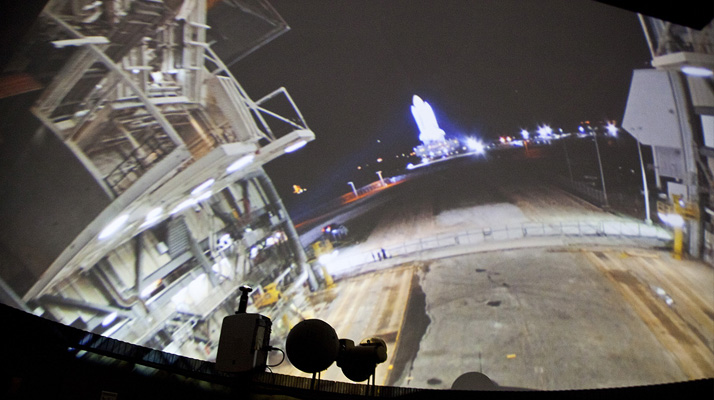
Monthly Skywatch
Upper Elementary and up
Learn how to use a simple star map. Maps are provided, so participants can take them home to use on their own. Similar to the "Stars of the Season" show in other respects.
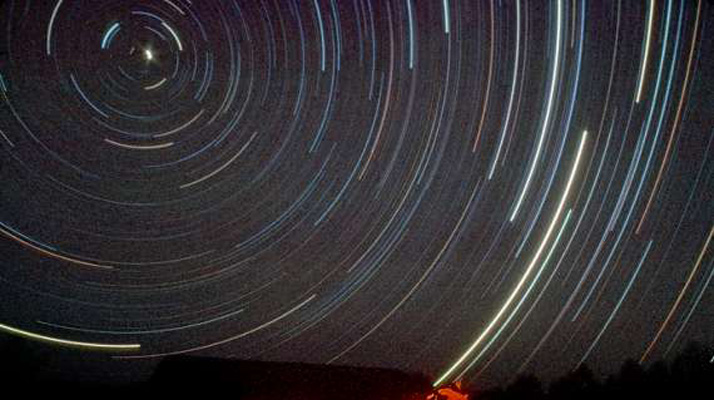
Reason for the Seasons
Upper Elementary and up
What causes the seasons? How are the seasons in the northern and southern hemispheres different? Students will observe and tabulate data about the Sun that will help them discover why the seasons occur.
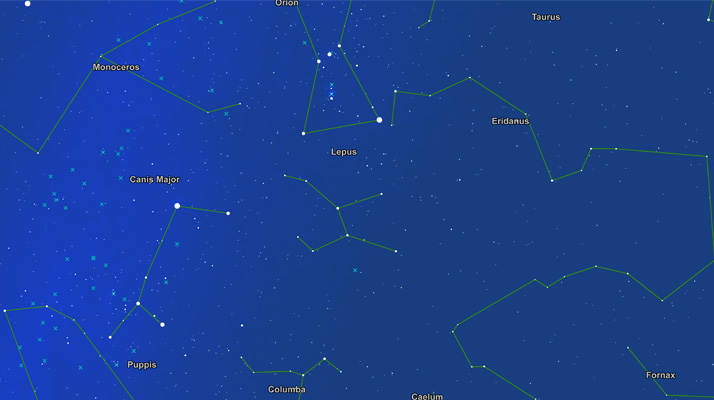
Stars of the Seasons
All Ages
This show looks at the current night sky. The principal constellations, bright stars, and planets are identified. It introduces the motion of the stars and the planets as they are viewed from the earth.
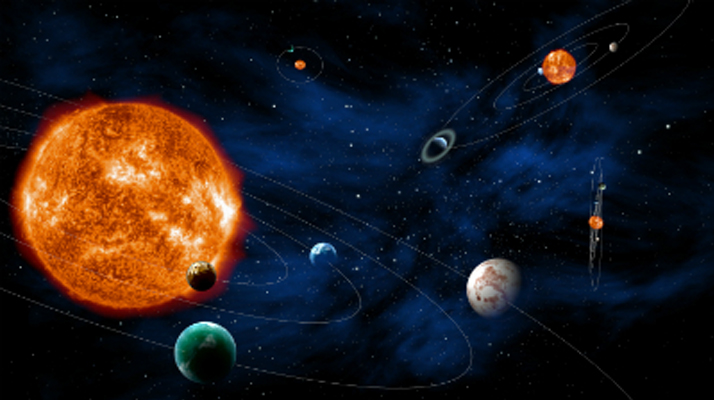
The Sun's Family
All Ages
Learn about the planets and how they move. Lower elementary groups will learn the names of the planets in order and learn some basic facts about them. Older groups will have a more detailed look at the planets and will receive an explanation of their apparent motion.
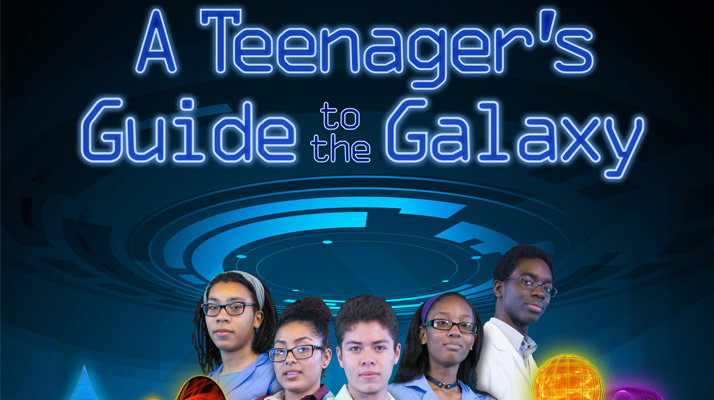
A Teenager's Guide to the Galaxy
Created and hosted by cosmically curious teenagers from urban Milwaukee schools, this unique cosmic experience will take you on a dynamic journey across the universe and through time. Explore the origins and fate of the universe, black holes and our Sun. Witness stunning full dome animations video scripted, story boarded and narrated by our inspiring young adults.
Upper Elementary and up
In case you haven’t heard, the Moon is trending again… and in a big way. Like in the glory days of the 1960s and 1970s, our big white space neighbor is enjoying the attention of lunar explorers. Only this time, they’re going back to the moon for good. The educational 24-minute Google Lunar XPRIZE fulldome planetarium show, Back To The Moon For Good, chronicles teams around the world competing for the largest incentivized prize in history, by landing a robotic spacecraft on the Moon for the first time in more than 40 years. To win the Google Lunar XPRIZE, a team must land a robotic spacecraft on the Moon, navigate 500 meters over the lunar surface, and send video, images and data back to Earth. This global competition is designed to spark imagination and inspire a renewed commitment to space exploration, not by governments or countries – but by the citizens of the world.
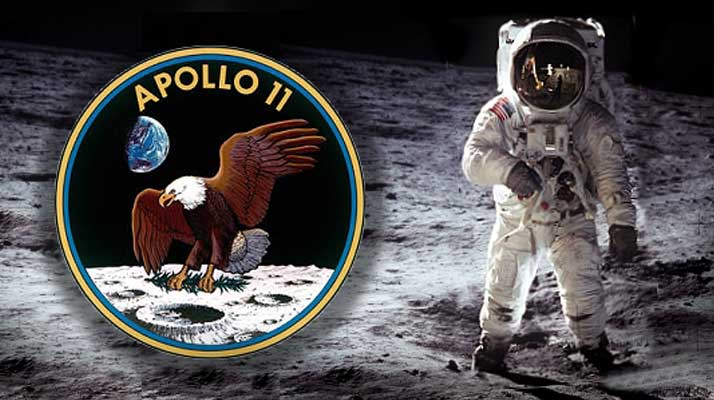
CAPCOM GO! The Apollo Story
General Audience
50 years ago the first human walked on the moon… discover the story behind this historic moment which will inspire the next generation of explorers and dreamers.
On July 20th 1969, 600 million people around the world gathered to witness a historic moment of human achievement broadcast live from the Moon.
“That’s one small step for man, one giant leap for mankind” Neil Armstrong. The world celebrated as the astronauts took their first steps on the Moon. But few people were aware of just how huge an effort it had taken to get them there. These Apollo 11 astronauts were just 2 of nearly 400,000 people who had worked over ten years towards this goal. But how did they do it? What did it take to put humans on the Moon?
NASA: Apollo 50th Anniversary
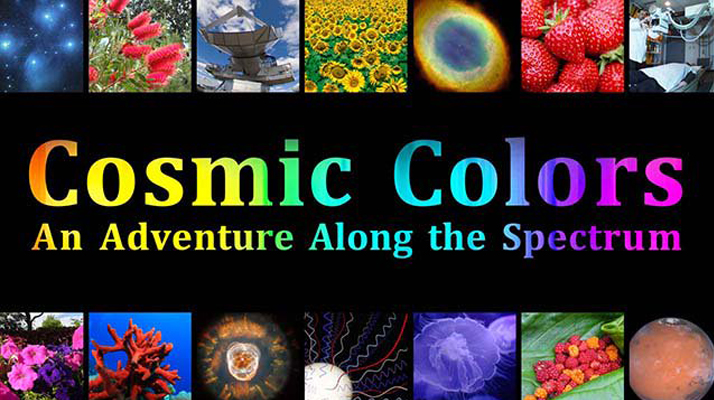
Cosmic Colors: An Adventure along the Spectrum
Upper Elementary and up
Explore the wonderful world of color. Why is the sky blue and Mars red? What color was a dinosaur? Take an amazing journey through the world around us and the universe under a rainbow of cosmic light. After the show we will take a look at the spring sky using our amazing digital projector.
Explore the unseen universe! See the cosmos through the Hubble Space Telescope's exquisite ultraviolet instrument, from hot young stars to distant quasars. Cosmic Origins Spectrograph is a fulldome look at the Cosmic Origins Spectrograph instrument installed on the Hubble Space Telescope in 2009 during Servicing Mission 4, as well as the science behind its utility. The show covers the basics of spectroscopy at a high level, and touches on the processing of galactic and extragalactic gas. Other topics include the use of quasars as background light sources, cosmic evolution, and the development of large scale structure.

Cosmic Recipe: Setting the Periodic Table
The famous astronomer Carl Sagan once said: “If you wish to make an apple pie from scratch, you must first invent the universe.” Though that may sound crazy, Sagan was onto something BIG! Want to know what? Pull up a chair at our Planetarium’s Periodic Table and learn the cosmic recipes that created everything in our world – even us! Discover how the Big Bang cooked up everyday elements such as the calcium in our teeth, the silicon in our smart phones, and even the carbon in our apple pies in our latest production, The Cosmic Recipe!
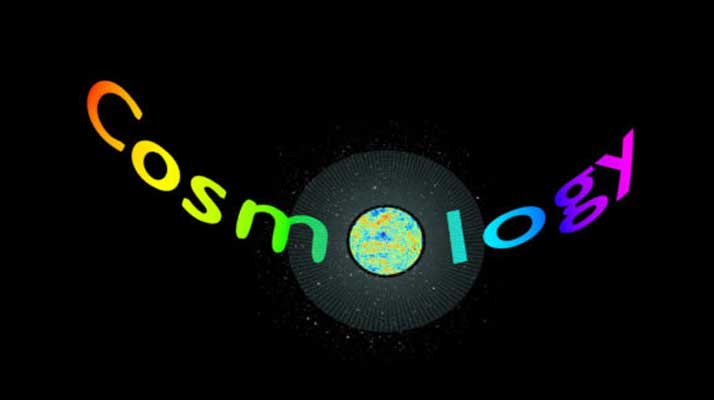
Cosmology
Ages 12 and up
How did the universe begin, and how is it evolving? Explore some of the big questions in this original show produced by the Casper Planetarium and narrated by Michael Stevens of Vsauce.
DARK is a fulldome movie that explains and explores the nature of dark matter, the missing 80% of the mass of the Universe. The search for dark matter is the most pressing astrophysical problem of our time – the solution to which will help us understand why the Universe is as it is, where it came from, and how it has evolved over billions of years – the unimaginable depths of deep time, of which a human life is but a flickering instant. But in that instant, we can grasp its immensity and, through science, we can attempt to understand it.
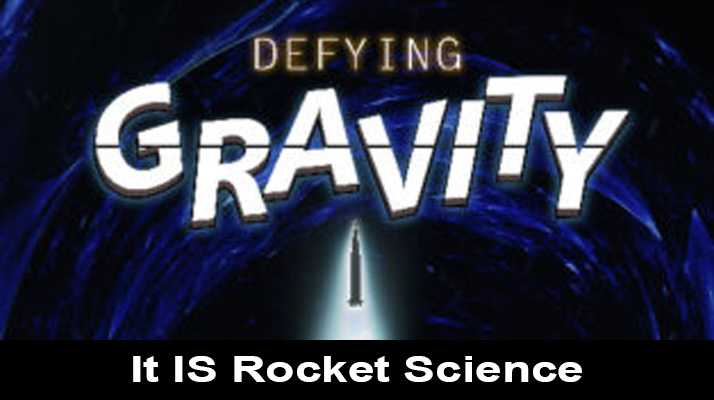
Defying Gravity: It IS Rocket Science
Upper Elementary and up
Join host Apollo Aurora and her science reporters as they explore the brains behind rocket power, gravity on other planets, and even monstrous black holes! Robot experts Apple 1-6-8-6 and EGR-1 will also lend a few circuits to explain the force that keeps us humans all grounded. Well, some of the time.
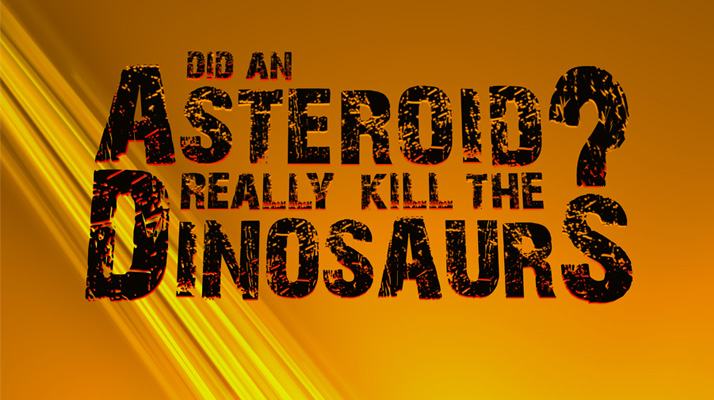
Did An Asteroid Really Kill the Dinosaurs?
Like Space? Like Dinosaurs? How about a show about them BOTH?! The show explores the possibility of a six-mile wide space rock slamming into the Earth 66 million years ago and wiping out 75 percent of all living species at that time, including the dinosaurs. The new planetarium show, produced in 2016 by the Milwaukee Public Museum, presents the numerous craters on worlds like the moon, Mars, and even distant Pluto. Cosmic collisions are abundant in our solar system; explore the dinosaur disaster up close!
Recommended for children age 10
The night sky is a view of infinity. Does alien life exist out there? Nothing we can ask about the universe is so important for our understanding of the world.
In the show we examine the conditions for a habitable zone starting the journey in our own solar system. Then we imagine a tour to some of the recently discovered exoplanets orbiting other stars in the Milky Way. What might be essential for life on distant moons or planets and how could we detect it?
We get an impression of the importance of telescopes, Mars rovers like “Curiosity” and space probes for these challenging studies.
Einstein’s Gravity Playlist is an original planetarium show that explores the ripples in space-time known as gravitational waves. Albert Einstein first predicted the existence of gravitational waves in 1916, and a century later, scientists detected these waves using incredibly precise laser technology here on Earth. In honor of this long-anticipated detection, the scientists who created the Laser Interferometer Gravitational-Wave Observatory (LIGO) won the Nobel Prize in Physics in 2017. In this show, viewers follow Lucia, a PhD student in physics, on an exploration of how gravitational waves are formed, how they move through the universe, and how scientists like her work to hear them.

Exoplanets
Ages 12 and up
Learn about planets beyond our solar system and techniques astronomers use to find them. This show was produced by the Casper Planetarium and is a winner of the Associazione dei Planetari Italiani Planetarium Video Competition.
Lower Elementary and up
Originally produced by the Children's Museum of Indianapolis, Flight Adventures lets young viewers discover the science of flight through the eyes of a young girl and her grandfather, as they explore how birds, kites, planes, and models fly. Learn about the history and future of flight and how NASA is discovering new and safer ways to travel with the help of future engineers and aviators-like you
The night sky, both beautiful and mysterious, has been the subject of campfire stories, ancient myths and awe for as long as there have been people. A desire to comprehend the Universe may well be humanity’s oldest shared intellectual experience. Yet only recently have we truly begun to grasp our place in the vast cosmos. To learn about this journey of celestial discovery, from the theories of the ancient Greek astronomers to today’s grandest telescopes, we invite you to experience From Earth to the Universe. Viewers can revel in the splendor of the various worlds in the Solar System and the ferocity of the scorching Sun. From Earth to the Universe then leaves our home to take the audience out to the colorful birthplaces and burial grounds of stars, and still farther out, beyond the Milky Way, to the unimaginable immensity of a myriad galaxies. Along the way, the audience will learn about the history of astronomy, the invention of the telescope, and today’s giant telescopes that allow us continue to probe ever deeper into the Universe.
Director Theofanis N. Matsopoulos described the film as “a colourful and inspiring journey… the visuals are stunning and really speak for themselves in showing just how far humanity’s ambition has taken us in terms of observing and understanding the Universe”.
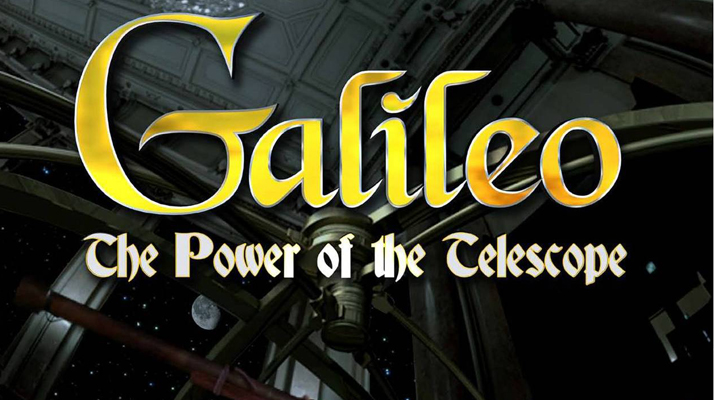
Galileo: The Power of the Telescope
Upper Elementary and up
Four hundred years ago, Galileo fitted two small pieces of glass into a tube and pointed it to the sky. The wonders that he observed changed our view of the heavens forever. Our new fulldome projector will be used to tell Galileo's personal story and relate the amazing discoveries made by the modern descendants of Galileo's "Optik Tube."
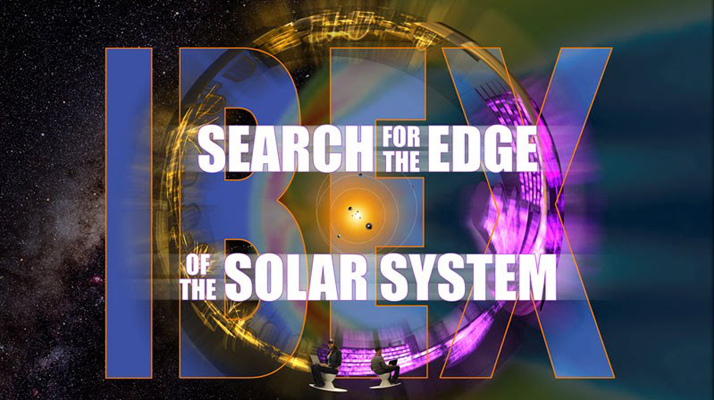
IBEX: Search for the Edge of the Solar System
Upper Elementary and up
The interstellar boundary is the last frontier of the solar system. Join two inquisitive teenagers as they voyage with NASA's Interstellar Boundary Explorer spacecraft to get an in-depth look at the mission and some of the challenges of space science.
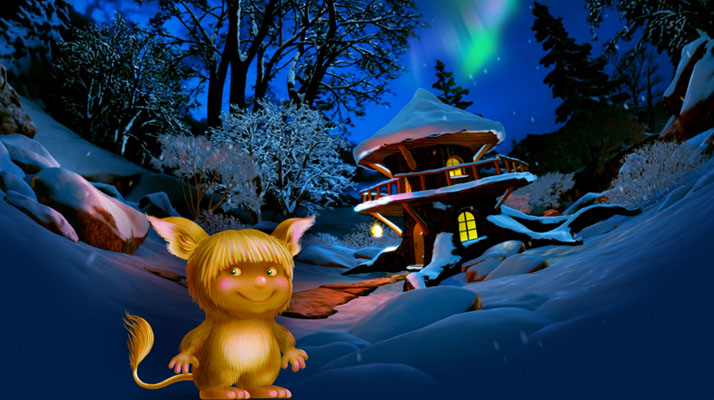
Khrumka’s Adventures in the Winter Forest
General Audience
On their way through the fairy tale winter forest, little Khrumka and his friends watch the Northern Lights, witness the flight of an asteroid, and admire the constellations of the winter sky. Thrilling rides, magic, and surprises await them on their fantastic journey.
Family show suitable for all ages
This is a 30 minute show that is a playful and imaginative presentation about an inquisitive cat who takes a trip to the Moon. Through Larry's eyes, we meet his human family-a group of enthusiastic sky-watchers. One of his family members, Diana, goes to work on the Moon as a lunar geologist. Larry misses Diana, so he figures out a way to get to the Moon and live with her. He smuggles himself on board the space station Freedom. From there, he is taken aboard the Lunar Shuttle, eventually ending up on the Moon, and surprising Diana! Meeting the rest of the Moon base inhabitants and learns about life in the Moon's environment.
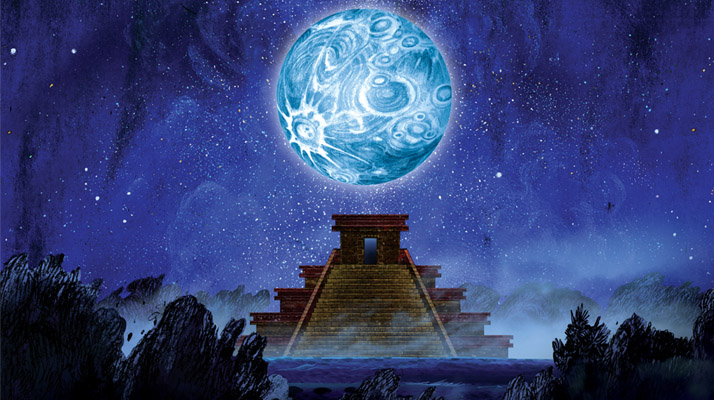
Mayan Archaeoastronomy : Observers of the Universe
Mayan Archaeoastronomy: Observers of the Universe is unique among planetarium shows, intertwining science and mythology to take the viewer on a poetic journey through how the Mayans have viewed and understood the Universe throughout their history. The visuals are stunning, giving the viewer the impression of being inside a beautifully stylistic painting. This artistic interpretation of the Universe makes for a journey that will not be forgotten.
 Max Goes to the Moon
Max Goes to the Moon
Grades K-8
Based on the book of the same name, Max (the dog) and a young girl named Tori take the first trip to the Moon since the Apollo era. Along the way, the story sets the stage for the more sophisticated science including “Phases of the Moon,” “Wings in Space?,” and “Frisbees and Curve Balls on the Moon” — all thoughtfully explained so that grownups and children can learn together about science. Toward the end, Max and Tori’s trip proves so inspiring to people back on Earth that all the nations of the world come together to build a great Moon colony from which “the beautiful views of Earth from the Moon made everyone realize that we all share a small and precious planet.”
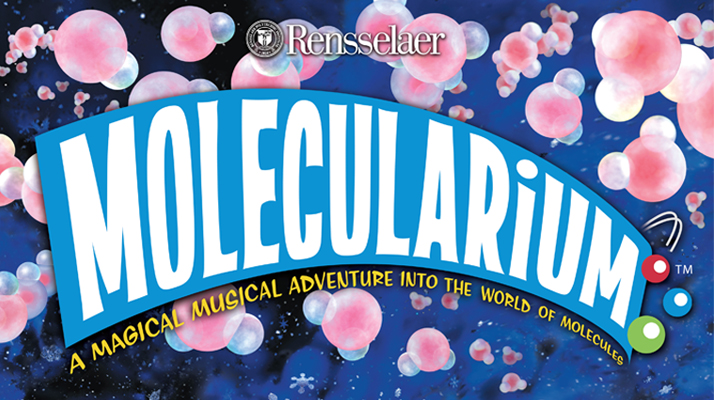
Molecularium: Riding Snowflakes Everything is made of atoms!
Molecularium: Riding Snowflakes, the award-winning digital dome experience, is a science lesson, a thrill-ride, and a magical musical adventure in a world of atoms and molecules. Aboard the Molecularium, audiences join a cast of atomic characters on an immersive and unforgettable adventure into the nanoscale universe. Explore billions and trillions of atoms and molecules with Oxy, a precocious oxygen atom, and Hydro and Hydra, her wacky hydrogen pals. Ride from the atomic structure of a snowflake to the far reaches of space aboard the Molecularium, the most fantastic ship in the Universe. In the digital dome adventure Molecularium: Riding Snowflakes, audiences are transported into the world of atoms, where they learn about the water cycle, the three states of matter, and that everything is made of atoms and molecules. Aligned with national science standards in primary school learning, educational assessment has shown that Molecularium: Riding Snowflakes truly helps kids learn. Riding Snowflakes brings kids on a musical cartoon adventure into a nanoscale universe created from accurate molecular simulations. They travel into a cloud, watch a snowflake form, and count the number of water molecules in a raindrop. Additional educational resource for this show.
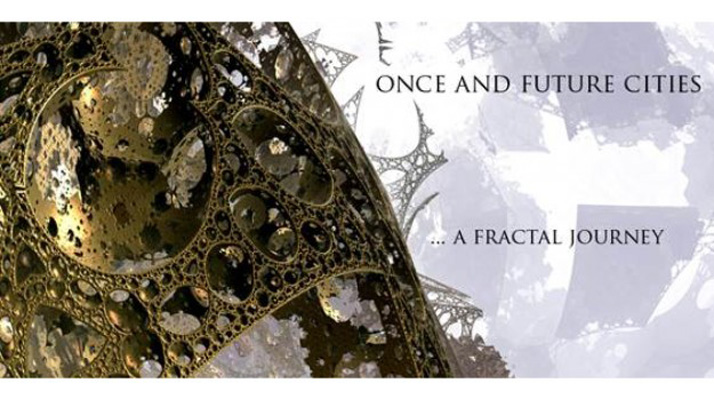
Once and Future Cities: A Fractal Journey
Connect emotionally with mathematics. Drift through 12 immersive computer-generated wonderlands that appear to stretch on forever. Fractals are images created by mathematical formulas with an infinitely repeating quality. Fractal art is comparatively new and computer-generated 3D fractals first appeared in 2009. Created by a team of fractal designers from around the world, Once and Future Cities is set to an award-winning soundtrack described as 'music to make you homesick for a place you never were'.
All ages
One World, One Sky is a brilliant spectacle of light and color as the furry friends watch the stars twinkle over Sesame Street. Children attending the show can interact as they watch, draw constellations and count the time it takes the sun to set. The show aims to nurture a child's natural sense of wonder about the night sky while forging cross-cultural connections, and bridging kids across nations through a common bond in learning about the sky together. This show was a big hit with our public show audiences.
Educator Resources | Teacher Resources
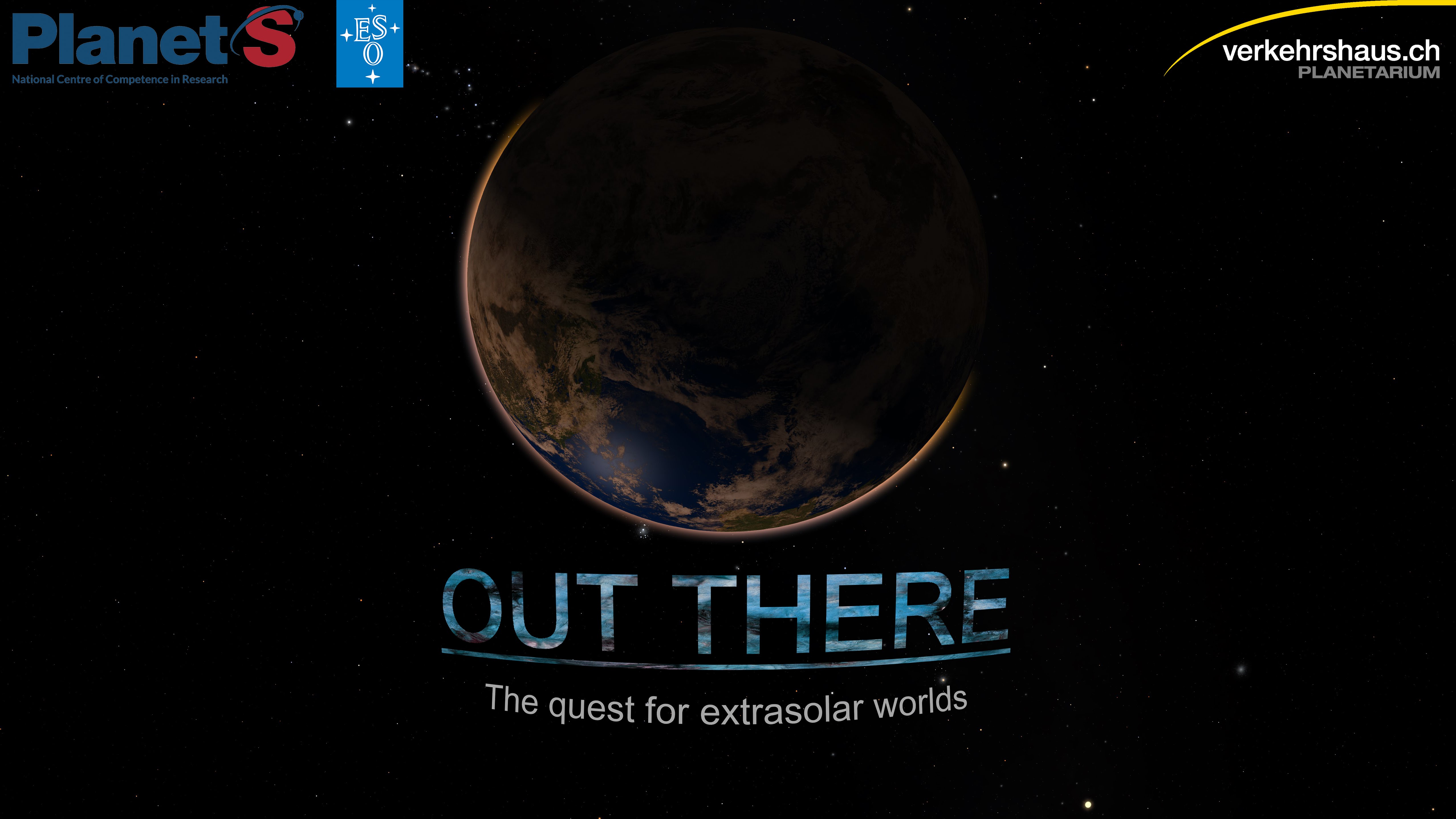
Out There: The Quest for Extrasolar Worlds
For thousands of years, mankind thought that the Earth was the center of the Universe. Thanks to our curiosity, imagination and urge to explore, we now know that planets like our Earth are nothing special in the cosmos. The Sun is just one ordinary star among hundreds of billions in our galaxy, the Milky Way. With the world’s most powerful telescopes, we are able to explore more and more of the Universe. What we have found so far has surpassed even the wildest expectations of scientists as well as authors of science fiction. Most stars have planets — it turns out they are more common than we thought. A huge diversity of different worlds is out there, just waiting to be discovered.
The show reveals the first hints of its existence through the eyes of Fritz Zwicky, the scientist who coined the term “dark matter.” It describes the astral choreography witnessed by Vera Rubin in the Andromeda galaxy and then plummets deep underground to see the most sensitive dark matter detector on Earth, housed in a former gold mine.
From there, it journeys across space and time to the Large Hadron Collider at CERN, speeding alongside particles before they collide in visually stunning explosions of light and sound, while learning how scientists around the world are collaborating to track down the constituents of dark matter.
General audiences, Grades 2-8
Saturn is the true "Lord of the Rings". After nearly seven years in transit, the two-story Cassini-Huygens spacecraft began orbiting Saturn on July 1, 2004. Cassini continues to explore Saturn and its moons during its extended mission, while the Huygens probe had landed on the surface of Titan, Saturn's largest moon. The Cassini Saturn encounter began with a flyby of Saturn's farthest moon, Phoebe. See Saturn up-close and all-around-you inside our dome theater.
Lower Elementary and up
Get in the holiday spirit! "Season of Light" traces the history of many of the world's December holiday customs, recounting the historical, religious and cultural rituals practiced during the time of winter solstice. It also takes a look at some of our more light-hearted seasonal traditions.
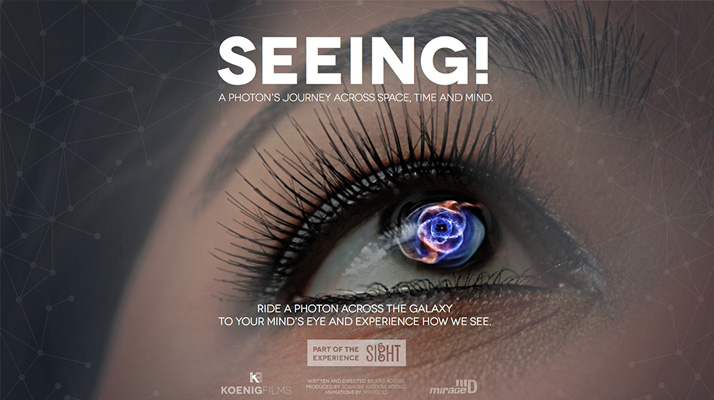
SEEING! - A Photon's Journey Across Space, Time & Mind
Narrated by Neil deGrasse Tyson, these stunning 360° visuals of landscapes, skyscapes, wildlife, humanity and space are used to tell the story of light, sight and vision. We begin with a photon’s creation inside a distant star and follow its immense journey across the galaxy into the eye of a young stargazer. As the photon enters, we learn about the structures of the eye, their functions and we ride along the optic nerve traveling the pathways of our brain, resulting in an image in our mind.
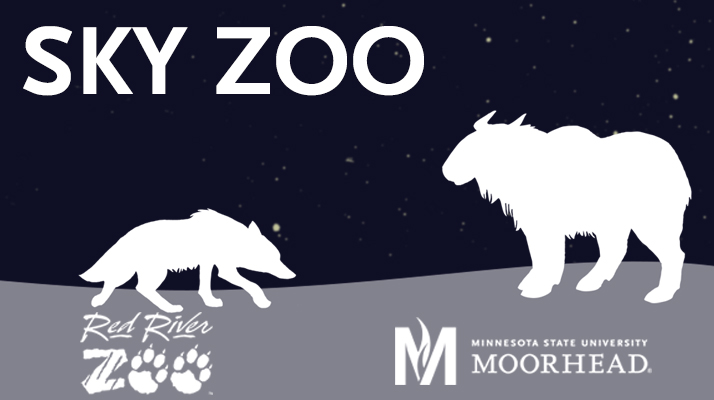
Sky Zoo
All Ages
The night sky is filled with an exotic bestiary of animals, some real and some imaginary. This show, designed for children and the young at heart, explores the animal constellations of the night sky and the fantastic stories that have been told about them. This MSUM production is done in partnership with the Red River Zoo, and includes video of Earthly animals at the Red River Zoo which match some celestial animals at the Sky Zoo. Another big hit with the public show audiences.
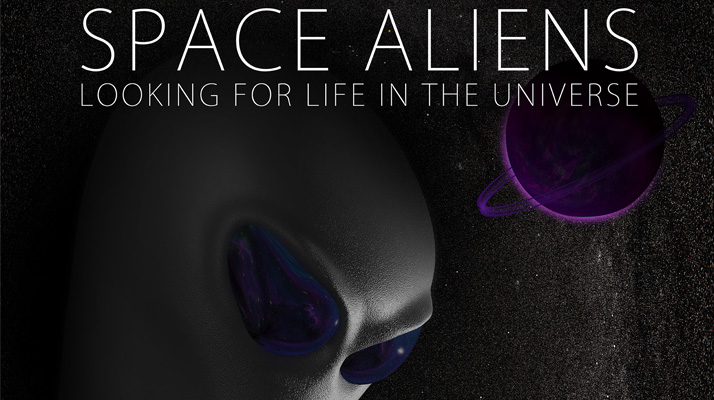
Space Aliens: Looking for Life in the Universe
From ancient philosophers to modern-day scientists scouring the sky for exoplanets, humans have always wondered who else might be “out there.” In Space Aliens we’ll embark upon an inter-galactic journey in attempt to answer the ultimate question of the universe: Are we alone? Join our alien “experts”–Hopeful and Skeptical–as they try to convince each other whether or not life exists beyond the Earth. Follow their astrobiology arguments from the ocean floor to a journey across the galaxy!
Journey back 2000 years to Bethlehem as we seek to discover a scientific explanation for the Star the wise men followed to find the baby Jesus. We'll investigate possible dates for the birth of Christ and look at recorded sightings of significant astronomical events during this timeframe. We'll see which of these signs in the sky could have been remarkable enough to cause the wise men to travel across the desert from Babylon to Bethlehem just to see a newborn King. This modern retelling of the Christmas story is sure to charm and captivate audiences of all ages.
A new, full dome planetarium experience from the Michigan Science Center. Discover the wonders of our sun. Its incredible energy has supported life on earth for millennia, but is now threatening our technology and way of life. Travel to the distant future to discover our sun’s connection to the universe’s cosmic cycle of life and death.
Educator Resources | Teacher Resources
What are the building blocks of our universe? We've been trying to answer this question since time memorial - however we still haven't found the ultimate answer. Approximately a quarter of the universe consists of mysterious dark matter. We know: It is there, however, we don't know what it is made up of. This planetarium show takes you on astrophysics' biggest quest. You'll see, why we know that there must be dark matter at all. Join the scientists on their observations, out in space, as well as deep under ground. Will they be able to reveal dark matter's mystery? Find out for yourself.
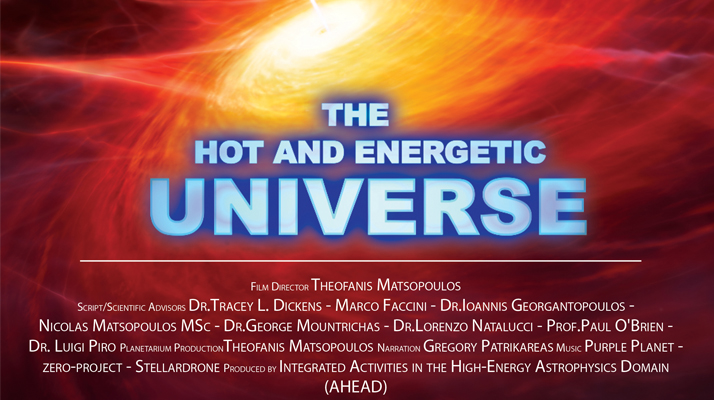
The Hot and Energetic Universe
This show presents the achievements of the modern astronomy, the most advanced terrestrial and orbital observatories, the basic principles electromagnetic radiation and the natural phenomena related to the High Energy Astrophysics. High Energy Astrophysics plays a key role in understanding the universe. These radiations reveal the processes in the hot and violent universe. High Energy Astrophysics probes hot gas in clusters of galaxies, which are the most massive objects in the universe. It also probes hot gas accreting around supermassive black holes in the centers of galaxies. Finally, high energy radiation provides important information about our own galaxy, neutron stars, supernova remnants and stars like our Sun which emit copious amounts of high energy radiation. Europe plays a leading role in high energy astrophysics research. The XMM-Newton and the Integral missions, are leading the exploration of the X-ray and gamma-ray universe. ESA‘s mission ATHENA, to be launched in 2028, will carry the most sensitive X-ray telescope ever and it will be the flagship of all high X-ray missions. The producer of the documentary is the “Integrated Activities in the High-Energy Astrophysics Domain” (AHEAD). AHEAD is a project funded by the European Commission in the framework of Horizon2020 (Access to large scale facilities). It is led by IAPS/INAF in Rome and involves most Universities and Research institutes which are involved in High Energy Astrophysics in Europe. The project aims to combine the efforts of all these Institutes in the analysis of X-ray data and facilitate the access to infrastructures distributed across Europe.
All Ages
This is a story for children of all ages about an average yellow star in search of planets of his own, to protect and warm. Along the way, he learns what makes each star and planet special. This has been a very popular program for younger audiences.
Perfect for your budding young astronomer, The Moon takes you on a journey of discovery with our planet's closest neighbor. Rediscover the Moon with this fun and educational planetarium program. Learn about the Moon's motion throughout a day and how it is different than its motion throughout a month. Observe how the appearance of the Moon changes over time as well.
General Audience, Ages 10 and up.
The Sun, Our Living Star tells the story of our nearest star — our planet’s powerhouse, the source of energy that drives Earth’s winds and weather, and the ball of light that allows the very existence of life. The Sun, Our Living Star reveals the impact our star has on every aspect of our lives here on Earth. Explore the Sun’s role in allowing and maintaining life, from photosynthesis to humanity. Discover how the Sun dictates our days, seasons and years. Delve into the history of the Sun’s impact on human religion and culture. Learn about the Sun’s dynamic nature — what appears as a flat disk in the sky is in fact a violent and evolving celestial body, burning 600 million tons of hydrogen every second. The Sun, Our Living Star allows viewers to experience the Sun in a new way, with never-before-seen images of its turbulent surface in immersive fulldome format, revealing its power and variability in breathtaking detail.
Recommended for children up to grade 2
This show follows a young girl as she learns about using her senses to observe seasons, weather, clouds and the water cycle.
Upper Elementary and up
Four hundred years ago, Galileo fitted two small pieces of glass into a tube and pointed it to the sky. The wonders that he observed, changed our view of the heavens forever. Come and join two young astronomers at a star party as they learn how telescopes work, the history of telescopes, and some of the major discoveries made by these instruments.

